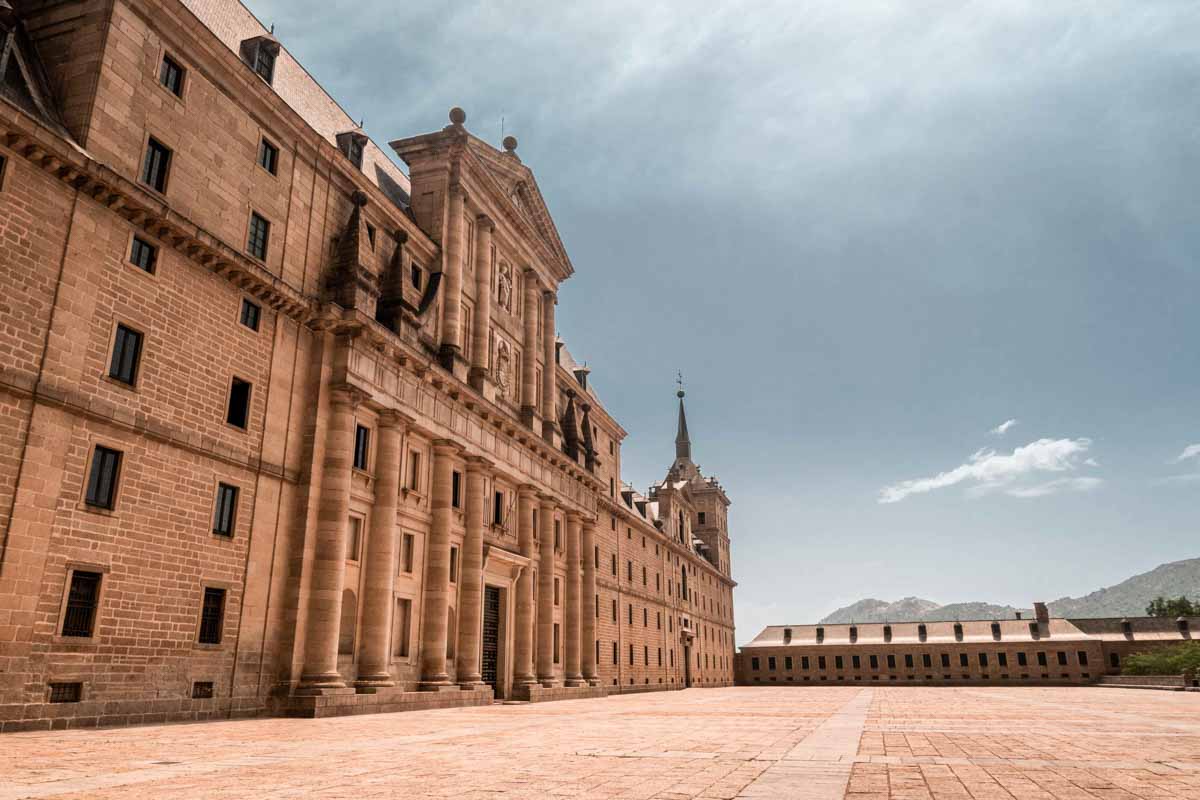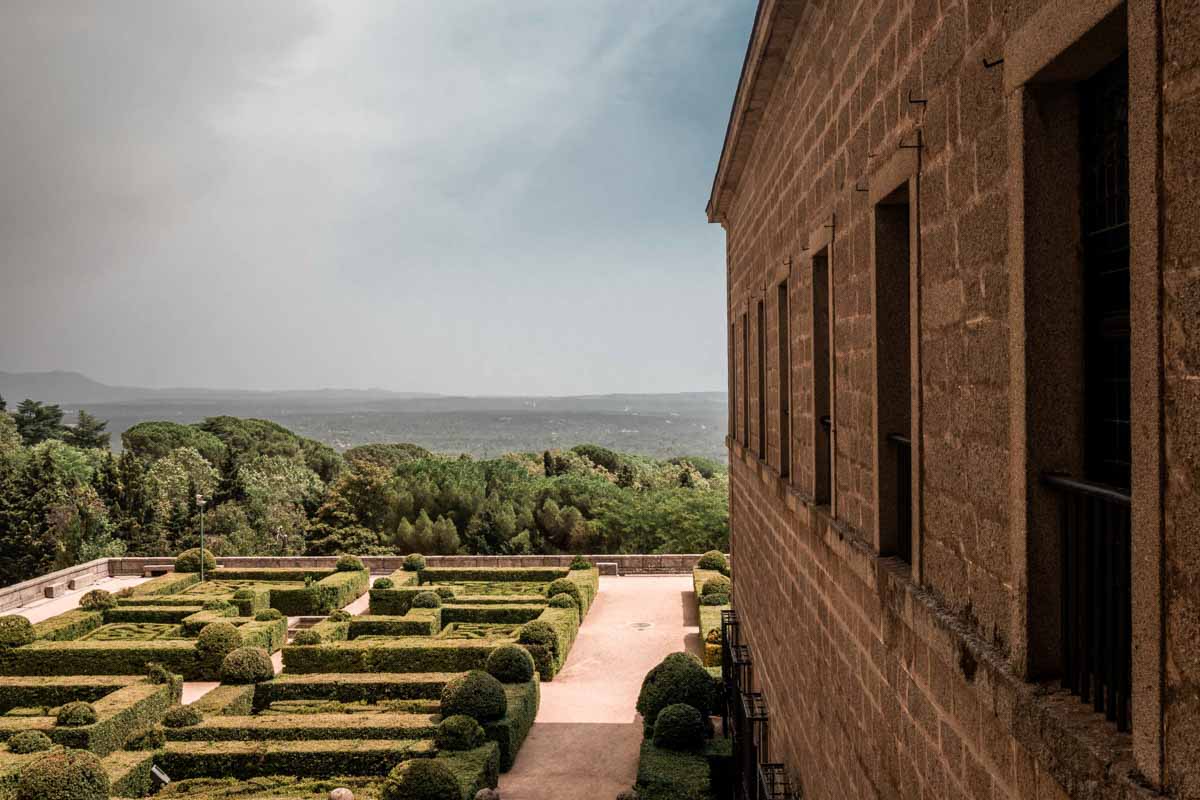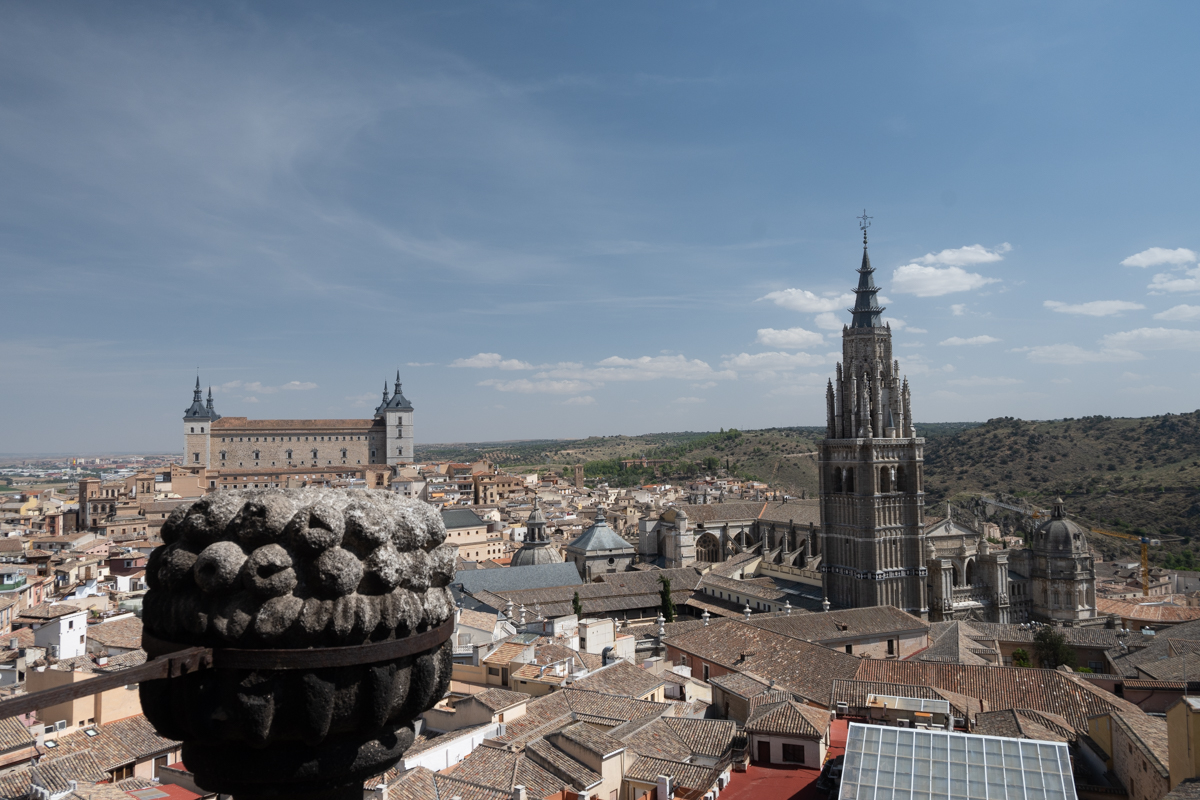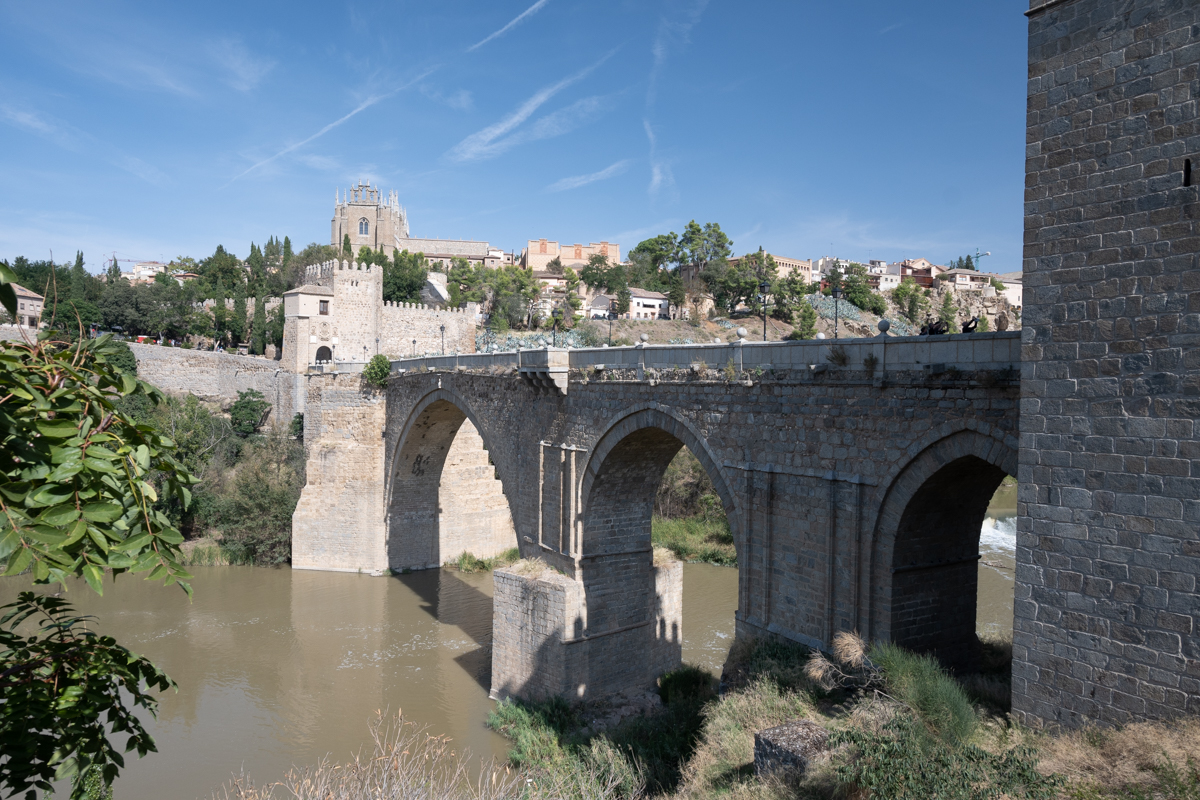Due to Madrid’s central location, there are actually quite a few day trip destinations that are reachable in around one to two hours from the city.
Some, like Toledo, are very well-known tourist destinations, while others are a bit more off the beaten track and less likely to be crowded with tourists.
Table of Contents
The Best Day Trips from Madrid
San Lorenzo De El Escorial
San Lorenzo De El Escorial is one of the best day trips from Madrid. Even though it’s a very popular place to visit, it doesn’t attract the huge tourist crowds that you might expect from such an important landmark.
The Monasterio de San Lorenzo de El Escorial is a royal site nestled an hour away from the bustling capital. This 16th-century Renaissance-style monastery sprawls over 33,000 square meters and is celebrated as one of Spain’s most magnificent palaces.

As a UNESCO World Heritage Site, El Escorial not only offers a glimpse into Spain’s regal past but also boasts a scenic location in the Guadarrama mountains, making it a must-visit for those drawn to royal history and serene natural settings.
You can discover the monastery’s historical significance, commissioned by King Philip II and designed initially by Juan Bautista de Toledo, Michelangelo’s assistant. After Toledo’s death, Juan de Herrera completed the project, adding his iconic symmetrical features.
The site was chosen by Philip II to celebrate his victory at the Battle of San Quintín and to provide a royal burial site. Today, El Escorial serves multiple purposes, housing a museum, gardens for meditation, and a crypt for Spanish royalty, with Augustinian monks still residing within its walls.
Declared a UNESCO site in 1984, El Escorial attracts over half a million visitors annually, offering tours that include the Valley of the Fallen. Accessible by public transport, with buses and trains available from Madrid, purchasing tickets in advance is recommended to avoid waiting in line. The complex’s rich history and the surrounding natural beauty make it a compelling destination for those looking to explore beyond Madrid’s city limits.
Definitely arrive early in the morning to beat the crowds and the heat, and factor in some time for lunch in a small bodega close to the monastery after your visit. The town where El Escorial is located is actually quite scenic and a great spot for an afternoon walk or a drink.
Note that parking can be a bit tricky at El Escorial. There is limited space available, and the local underground parking garages are very small, so not suitable for larger vehicles.
It’s also important to note that most parts of the palace do not permit photography and that you won’t be able to take larger bags inside, so leave those behind at home or in your car.

Toledo
Toledo is probably Madrid’s most famous day trip destination, and if you only have time for one of the following trips, it should probably be Toledo. Located around one hour by car from the capital, this historic town is the perfect place to explore, learn about Spain’s history and culture, and fall in love with the intricate architecture that this region is so famous for.

If you don’t have your own car, you can also take the AVANT train, which departs from Madrid’s Atocha train station and gets you directly to Toledo in less than 40 minutes, which is actually faster than driving. Just make sure to double-check current departure times to make sure you’re not missing the last train back since the schedule can be somewhat limited, especially on weekends.
Luckily, Toledo is small enough that it can be explored on foot if you don’t have your own car. You can also take the local buses if you don’t feel like walking on a hot day. Bus stations are located all over town, and a ride only costs a few euros. Since Toledo is built on a hill, you’ll be glad you won’t have to walk all the way up to the top.

Toledo, a captivating historical city, offers various activities that transport visitors back in time. Begin your exploration at the Alcázar of Toledo, a fortress with panoramic views, before delving into the city’s spiritual heritage at the stunning Toledo Cathedral, a masterpiece of Gothic architecture.
Wander the winding streets to discover the Synagogue of Santa María la Blanca, a symbol of Toledo’s diverse religious past. Art enthusiasts will love the El Greco Museum, which is dedicated to the Renaissance painter who made Toledo his home.
Don’t miss the chance to stroll across the iconic Puente de San Martín, a medieval bridge offering picturesque views of the Tagus River. You can even cross the river via zipline if you’re looking for an adrenaline rush.

Throughout, savor Toledo’s unique blend of Christian, Muslim, and Jewish influences, not just in its monuments but also in its culinary delights, making your visit a truly immersive cultural experience.
Segovia
To enjoy a day trip from Madrid to Segovia, start by choosing your mode of transport; the fastest option is to take the high-speed train (AVE) from Madrid’s Chamartín station, which will get you to Segovia’s Guiomar station in just under an hour.
Alternatively, you can opt for a bus from the Moncloa bus station in Madrid, which offers a more economical but slower journey, taking about an hour and a half or even two, depending on the weekday. Upon arrival in Segovia, consider catching a local bus or taxi to the city center or enjoy a scenic walk if the weather is nice. Just make sure you’ve got plenty of energy left to explore the actual city.
Your day trip begins at the majestic Roman Aqueduct, one of the most well-preserved ancient monuments in all of Spain. The Segovia Aqueduct dates back to the 1st century AD and is truly a sight to behold. This engineering marvel was constructed to transport water from mountain springs located 17 kilometers away directly to the city’s public fountains, baths, and private residences. Remarkably, it continued to serve the city until 1973 and is now a protected landmark.
From there, navigate through Segovia’s quaint streets to discover the Alcázar of Segovia, a castle that seems to emerge from the pages of a storybook, and the Segovia Cathedral, a masterpiece of Gothic architecture.
Don’t miss the chance to try some of Segovia’s local specialties, such as the famous cochinillo asado, which is a traditional roast suckling pig. You can find it in most local restaurants, many of which are located in small alleys and offer beautiful outdoor seating if the weather is nice. The Mesón De Cándido is highly recommended and located right at the famous aqueduct, so you won’t have to go far.
Remember to check train and bus schedules in advance and consider purchasing tickets online to avoid long waits. It’s easy to get stuck in Segovia if you miss the last transport back, so always double-check the train schedule or ask at the station to make sure you’ve got plenty of time for the trip back to Madrid.

Avila
Go on a day trip from Madrid to the historic city of Avila to immerse yourself in a place where medieval history and architecture are vividly alive. There are several transport options available to choose from, the first being a direct train from Madrid’s Atocha or Chamartín stations, a journey that unfolds the picturesque landscapes of Spain in approximately an hour and a half to two hours, depending on the connection.
Another option is the bus from Madrid’s Estación Sur, which provides a scenic route of similar duration but is slightly cheaper. Both modes of transportation are efficient, but the most comfortable is to rent a car, so you can be flexible on arrival and explore Avila at your own pace without having to worry about bus or train schedules and missing your ride back to Madrid. The drive takes approximately one hour and 20 minutes, depending on the traffic.
You’ll immediately fall in love with Avila when you first see its magnificent medieval walls, a UNESCO World Heritage site, encircle the old town ,which serve as a testament to Avila’s historical significance and offer visitors a chance to walk atop these ancient structures.
This experience not only provides breathtaking views of the city and its surroundings but also leads you to discover other architectural wonders. The Cathedral of Avila, a fusion of Romanesque and Gothic design, is an incredible landmark and the perfect spot to take photos to remember your day trip forever. Don’t miss out on the Convent of Saint Teresa, which offers a serene glimpse into the spiritual legacy of one of Spain’s most revered saints.
In the afternoon, take some time to explore the cobblestone streets and alleys, where every corner tells a story and charming local shops offer unique souvenirs and artisanal crafts. Avila has a great selection of small shops and boutiques where you can shop for souvenirs that are a bit more unusual and unique than what you can usually expect to find. The city’s bodegas and small restaurants are equally impressive, with ‘Chuletón de Ávila,’ the popular Avila-style steak, being a must-try for any food enthusiast seeking to savor the flavors of the region.
To enhance your visit, consider timing your trip to coincide with one of Avila’s many festivals, providing a deeper insight into the local culture and traditions. Semana Santa around Easter time is an especially beautiful time to visit Avila, with its many parades and celebrations. You’ll also love Santa Teresa Week in mid October, which is a beautiful celebration honoring Saint Teresa, the city’s patron saint.
Tourists can experience a mix of religious ceremonies, cultural events, and guided tours that shed light on her life and legacy. Highlights include processions, concerts, and special access to key historic sites, including the Carmelite Convent. This week offers a unique blend of spiritual reflection and cultural immersion, set against the backdrop of Ávila’s medieval architecture.
Whether it’s the warmth of summer or the crisp air of autumn, you’re guaranteed to have a good time on a day trip to Avila. While there aren’t as many things to do as there are in, for example, Segovia and Toledo, Avila is a somewhat underrated spot that is the perfect place to help you escape the tourist crowds.
Alcalá de Henares
Taking a day trip from Madrid to Alcalá de Henares is a fun journey into the heart of Spanish literature and history. This is the closest day trip destination from Madrid on this list, and Alcalá de Henares is almost still located in the city itself, so it’s easy to reach without having to sit in transport for hours on end.
The most straightforward way to reach Alcalá de Henares is by train, with frequent services departing from Madrid’s Atocha station. The journey takes about 40 minutes and transports you to the birthplace of Miguel de Cervantes, the illustrious author of Don Quixote.
Upon arrival, the historic center of Alcalá, a UNESCO World Heritage site, welcomes you with its Renaissance and Baroque buildings, echoing the scholarly and cultural prestige of one of Europe’s oldest universities.
Your day trip begins at the Cervantes Birthplace Museum, where the life and works of the writer are celebrated in his original family home. Strolling through the cobbled streets, you’ll discover the University of Alcalá, a masterpiece of Spanish Renaissance architecture. The university’s facade is a photo-worthy highlight, and its rich history as a center of learning since the 16th century is evident in its stunning halls and spacious courtyards.
Alcalá de Henares is also renowned for its culinary scene, especially the traditional tapas bars that line the historic streets, offering a chance to try local specialties. Be sure to try “costrada de Alcalá,” a sweet pastry that’s a favorite among locals and visitors alike.
For those interested in architecture and history, the city’s many churches and convents, including the Magisterial Cathedral, provide a deep dive into the religious and architectural heritage of Spain. Meanwhile, the annual Cervantes Prize ceremony, held at the university, attracts literature enthusiasts worldwide, celebrating the Spanish language’s most prestigious literary award.
With its combination of literary history, stunning architecture, and vibrant culinary scene, Alcalá de Henares offers a comprehensive cultural experience. Planning your trip with a look at the train schedules and museum opening times will help make the most of your day, ensuring a seamless and enriching visit. Whether you’re a fan of Cervantes, a lover of history, or simply in search of a charming Spanish town to explore, Alcalá de Henares promises a memorable day trip from Madrid.
When is the best time to go on a day trip from Madrid?
Madrid’s climate is extremely hot during the summer and very cold in winter. This means that the most popular time to visit the city usually lies in September and October, or some time in late spring or early summer around May to June.
Easter is also extremely popular due to the Semana Santa celebrations and parades happening during this time.
In these months, Madrid and its day trip destinations can get very crowded and prices tend to rise, so exploring Madrid on a budget can be a challenge during this time. You may even have to pre-book tickets to attractions such as El Escorial to ensure you’re getting a spot and won’t miss out.
August, the hottest month of the year, however, is usually quite empty in Madrid, as many local residents leave the heat of the city behind in favor of coastal towns or cooler places around Europe. You can still find public swimming pools in Madrid, but the selection is definitely limited.
Just be aware that Madrid’s temperatures regularly rise up to 40 degrees celsius during this time, making day trips an exhausting endeavor!
Winter can be a great time for a day trip from Madrid, although it can become quite cold in December and January. Pack warm clothes and try to aim for a day with plenty of sun, which will help you warm up even on cold days.
The best time for a day trip from Madrid is probably in the fall, during October or just after easter, when the crowds have dispersed slightly and the weather is comfortably warm but not too hot.
What’s the best day trip from Madrid?
Madrid, with its central location, serves as an excellent base for exploring the scenic countryside and historical towns of central Spain. Beyond the city’s many things to do, day trips to destinations like Toledo, El Escorial, Segovia, Ávila, and Alcalá de Henares offer a deeper dive into the region’s rich heritage and stunning landscapes, accessible within one to two hours.
If you only have time for one, a day trip from Madrid to Toledo is a fantastic choice, as it perfectly combines a lot of the charm and activities that other destinations on the list also offer. If you can add a second destination, definitely visit El Escorial on another day to experience the beauty of one of Spain’s most significant and famous palaces.
Victoria is a travel blogger and writer from Germany who spent several years living in Madrid. She now has her permanent home in Bali, Indonesia and publishes travel advice on her site Guide Your Travel.


![Didn’t expect to try caterpillars in Thailand but here we are… 😂
This night was an unexpected highlight of my time in Northern Thailand with @intrepidtravel. They drove us out to a field where a tractor picked us up and took us to Daidib Daidee Pua Nan, a wood-fired pizza restaurant in the middle of the rice fields!
They only make a few pizzas a day, so they have to be reserved in advance. Our group sat out under the moonlit fields, our table lit by candles as a local musician played acoustically. And on top of the pizza, we were able to try caterpillars, which tasted a lot like fries honestly, the way they were made!
It was all such a vibe and really what I love about group travel and tours. It’s nice to be open to an unexpected experience you would have never known about on your own.
[hosted] #thailandinsider #visitthailand #northernthailand #intrepidtravel](https://readysetjetset.net/wp-content/plugins/instagram-feed/img/placeholder.png)






